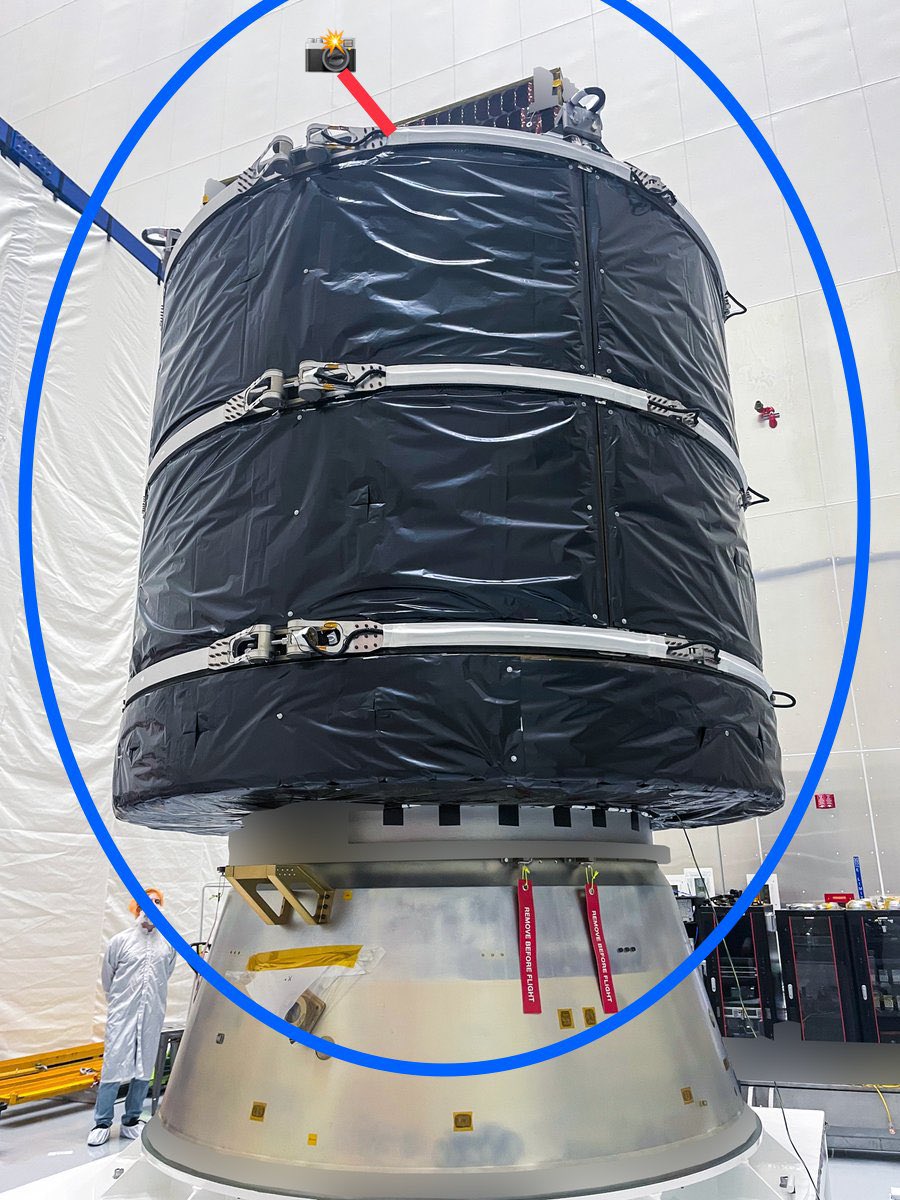
A small thread 🐾🧶🐈⬛ on choice of orbital inclination.
We learned in two previous business calls $ASTS plans to launch 5 BlueBird block1 satellites on a single launch.
B. Riley update today tells us that it is
likely a 22° inclined orbit.
Lets figure why that might be?
1/n
We learned in two previous business calls $ASTS plans to launch 5 BlueBird block1 satellites on a single launch.
B. Riley update today tells us that it is
likely a 22° inclined orbit.
Lets figure why that might be?
1/n
https://twitter.com/spacanpanman/status/1598332603060346880

BlueBird block 1, BBb1, are same size as BlueWalker3, BW3, that is currently in orbit.
Size is 1288x1288x~1650 mm shape is like a cube, and BW3 was packed inside an even larger barrel shaped ”LVA”, Launch Vehicle Adptor.
Weight assumed to be approx 1500 kg each.
2/n


Size is 1288x1288x~1650 mm shape is like a cube, and BW3 was packed inside an even larger barrel shaped ”LVA”, Launch Vehicle Adptor.
Weight assumed to be approx 1500 kg each.
2/n



Falcon 9 and Falcon Heavy fairings comes in two sizes. The extended version has room for a central pillar of LVA diameter (~1900) that is some ~ 15.5 meters high.
Plenty of space for 5 LVAs on top of eachother. Close to 3 meters vertical space each. 2–2.5 needed.
3/n



Plenty of space for 5 LVAs on top of eachother. Close to 3 meters vertical space each. 2–2.5 needed.
3/n




When launching it is best due east as you get help from earth rotation.
But if the launch site is not on the equator then the lowest inclination You can launch directly to equals the latitude.
You reach that lowest inclination by launching directly east (or west).
4/n
But if the launch site is not on the equator then the lowest inclination You can launch directly to equals the latitude.
You reach that lowest inclination by launching directly east (or west).
4/n

As the Eastern Range is on 28.5 degrees latitude launching to the lowest inclination possible means 28.5 degrees inclination.
Western Range (Vandenberg) is no better for low inclinations.
And so due east (azimuth 90) results in 28.5 degrees inclined orbit.
5/n


Western Range (Vandenberg) is no better for low inclinations.
And so due east (azimuth 90) results in 28.5 degrees inclined orbit.
5/n



That is the closest SpaceX gets to equatorial (0 inclination) without maling a dogleg maneuver. A course correction mid flight.
The problem is. Dogleg costs Delta V.
It costs a lot of power.
To the level 5 BBb1s can not reach equatorial from Eastern range on single Falcon.
6/n
The problem is. Dogleg costs Delta V.
It costs a lot of power.
To the level 5 BBb1s can not reach equatorial from Eastern range on single Falcon.
6/n

Getting such a heavy payload ~7500+ kg (10,000+ kg with LVAs ?)
Is not possible with such a sharp turn /dogleg.
Unless you use a Falcon Heavy. Which is a Falcon9 with a couple of extra Falcon9 first stages strapped to it.
Then barely possible. And maybe 3-4 not 5.
7/n


Is not possible with such a sharp turn /dogleg.
Unless you use a Falcon Heavy. Which is a Falcon9 with a couple of extra Falcon9 first stages strapped to it.
Then barely possible. And maybe 3-4 not 5.
7/n



Equatorial (0 inclination) requires only 18 BlueBird block 2 to give continous coverage. But will be cheaper to populate using Starship with a lot of cheap excess power.
But there might be a better solution still. A compromise of sorts. Or an optimization.
8/n


But there might be a better solution still. A compromise of sorts. Or an optimization.
8/n



Making a smaller dogleg from 28.5 optimal launch inclination to 22 requires less power.
While a constellation at 22 degrees is using a trajectory quite close to the equator. And thus becomes more dense than if launched like BlueWalker3 to 53.2 degrees.
9/n


While a constellation at 22 degrees is using a trajectory quite close to the equator. And thus becomes more dense than if launched like BlueWalker3 to 53.2 degrees.
9/n



The power requirement is so much lower a standard Falcon 9 is sufficient.
Possibly with reusable first stage ocran recovery. No Falcon Heavy needed for 22 degrees.
But benefits do not stop there with cheaper launch.
10/n

Possibly with reusable first stage ocran recovery. No Falcon Heavy needed for 22 degrees.
But benefits do not stop there with cheaper launch.
10/n


7 countries (Kenya and Nigeria among them) are regulatory good to go. Because $ASTS partners have Universal License for their spectrum there.
The diamond in that crown is India. Where $ASTS partner Vodafone holds UL in the whole country.
All are covered by 22° but not 0°
11/n
The diamond in that crown is India. Where $ASTS partner Vodafone holds UL in the whole country.
All are covered by 22° but not 0°
11/n

BlueWalker3 is currently testing the entire FirstNet broadband spectrum. A network dedicated for First Responders.
22 degrees would create intermittent coverage in a region prone to earth quakes, hurricanes, wildfires, desert heat and such in the south of continental USA.
12/12
22 degrees would create intermittent coverage in a region prone to earth quakes, hurricanes, wildfires, desert heat and such in the south of continental USA.
12/12

• • •
Missing some Tweet in this thread? You can try to
force a refresh
















